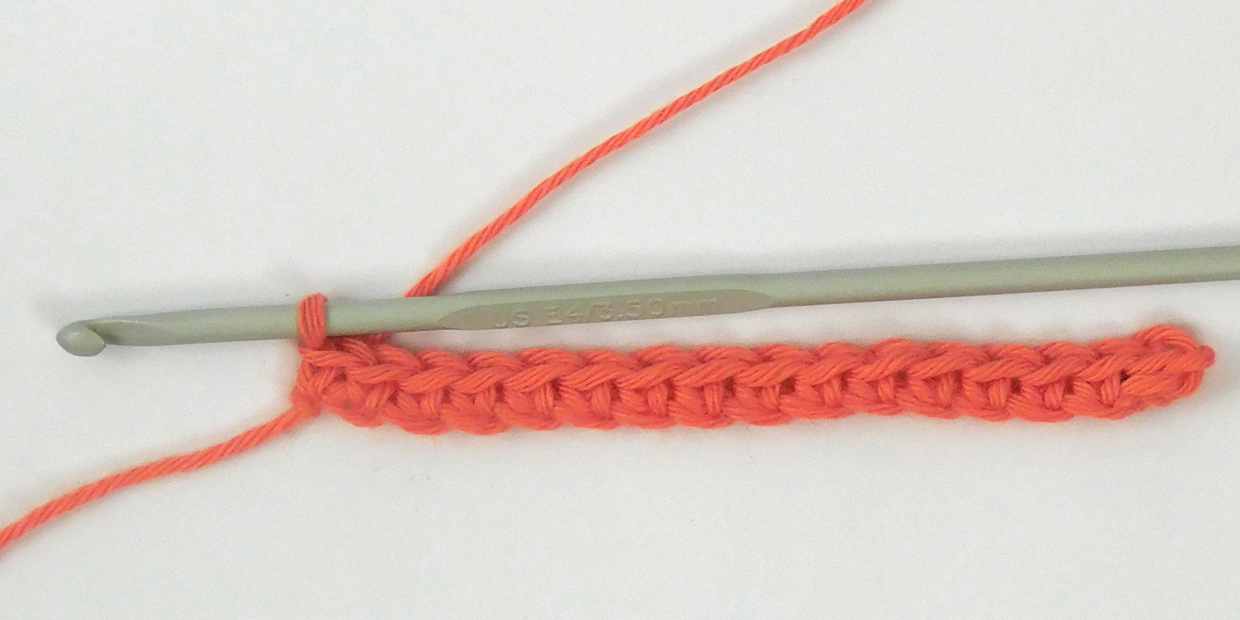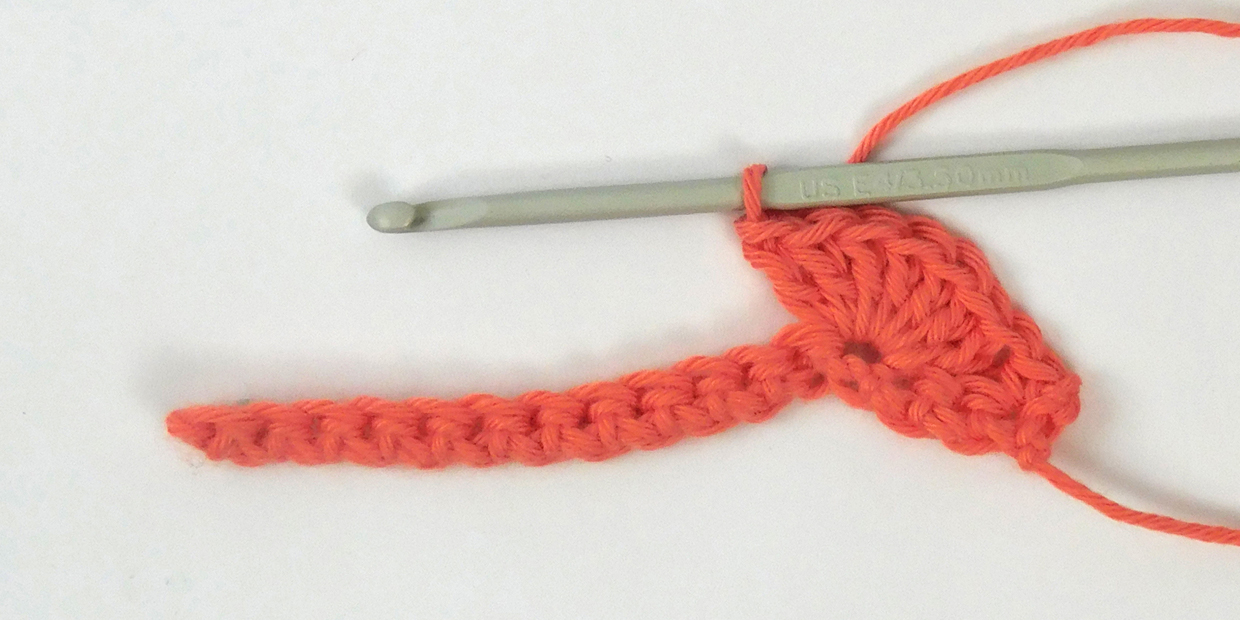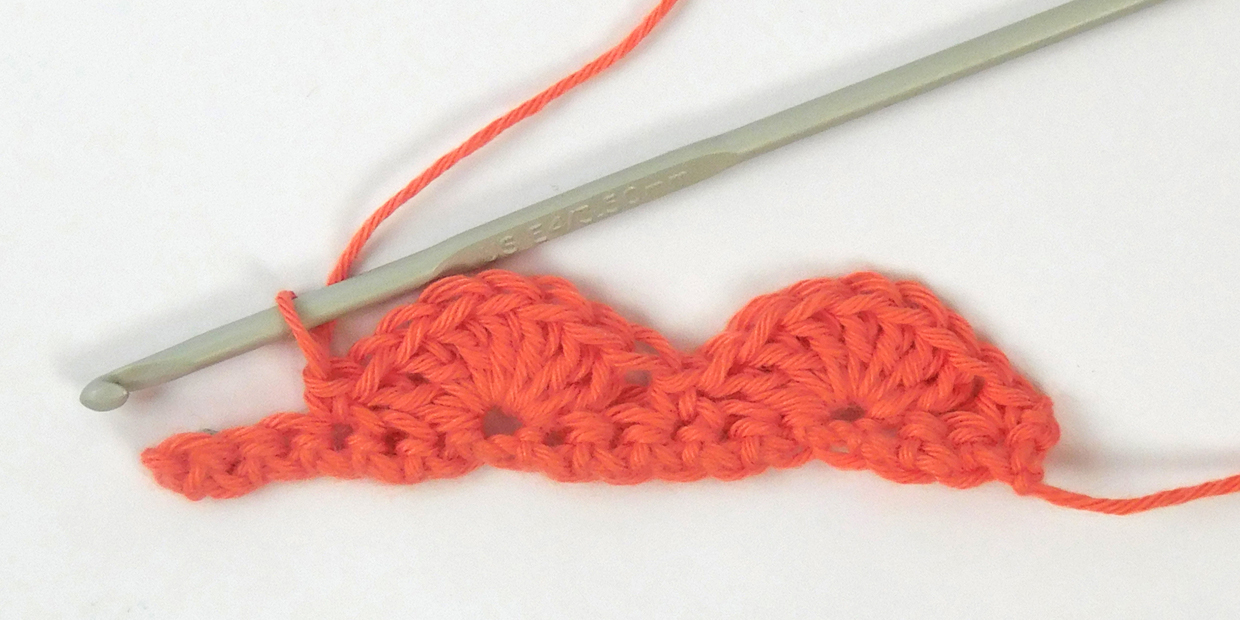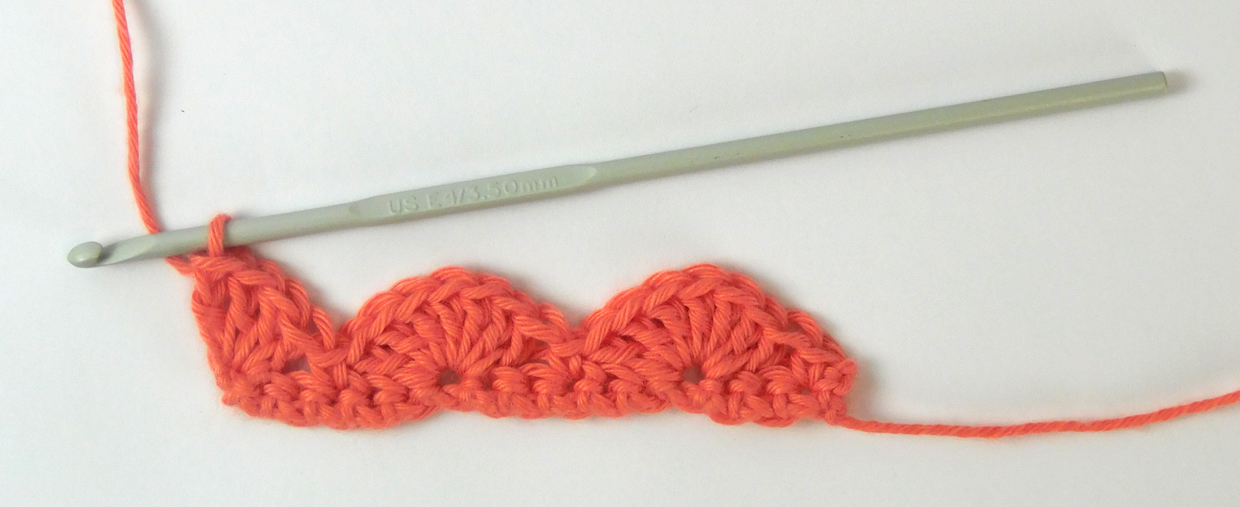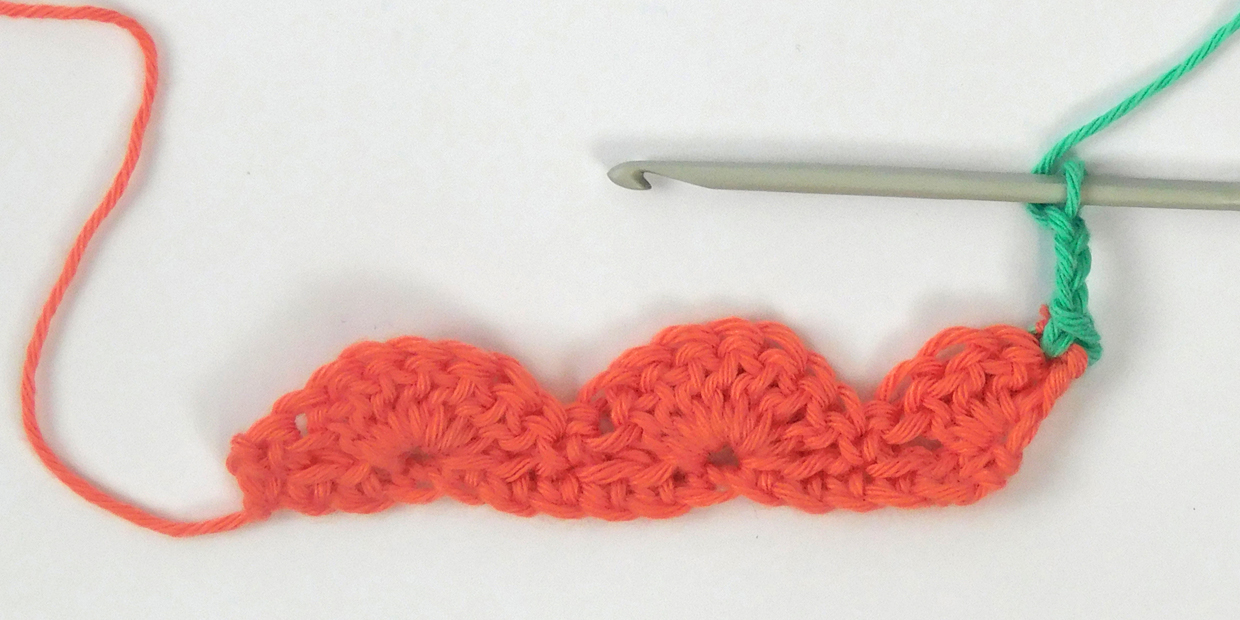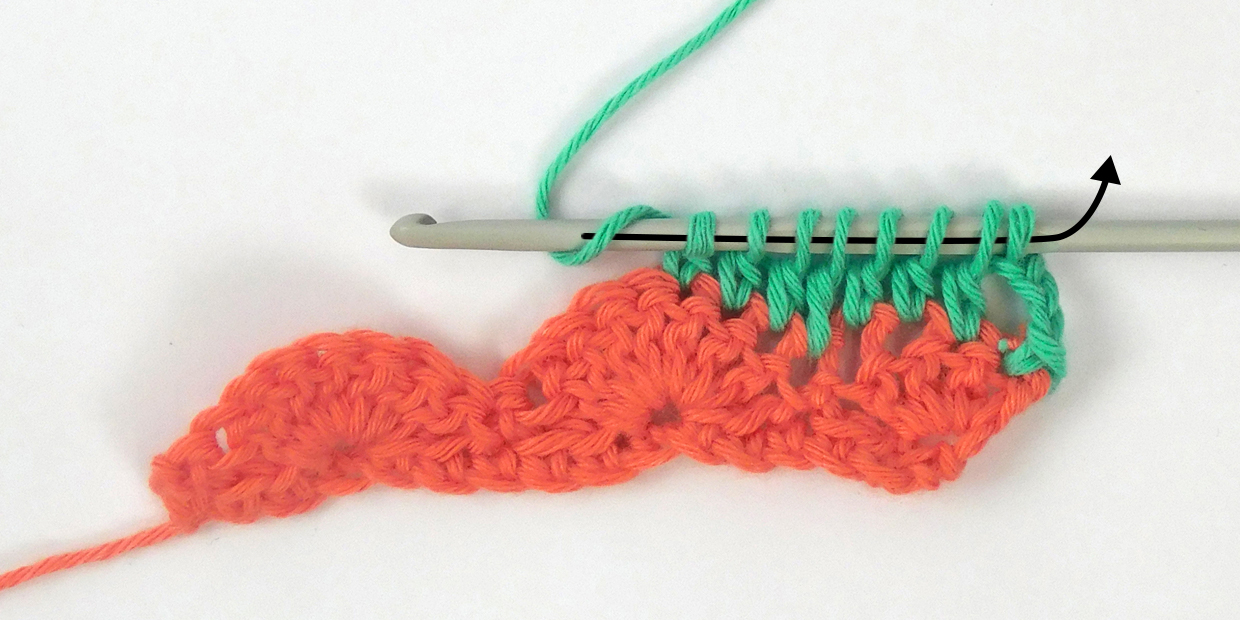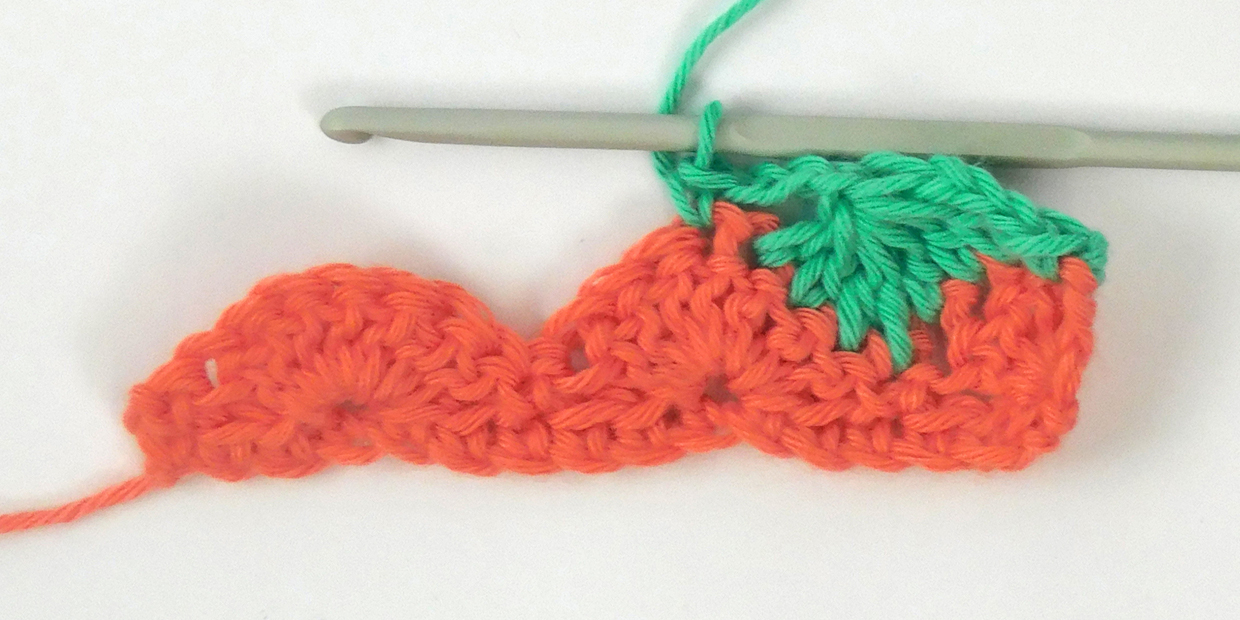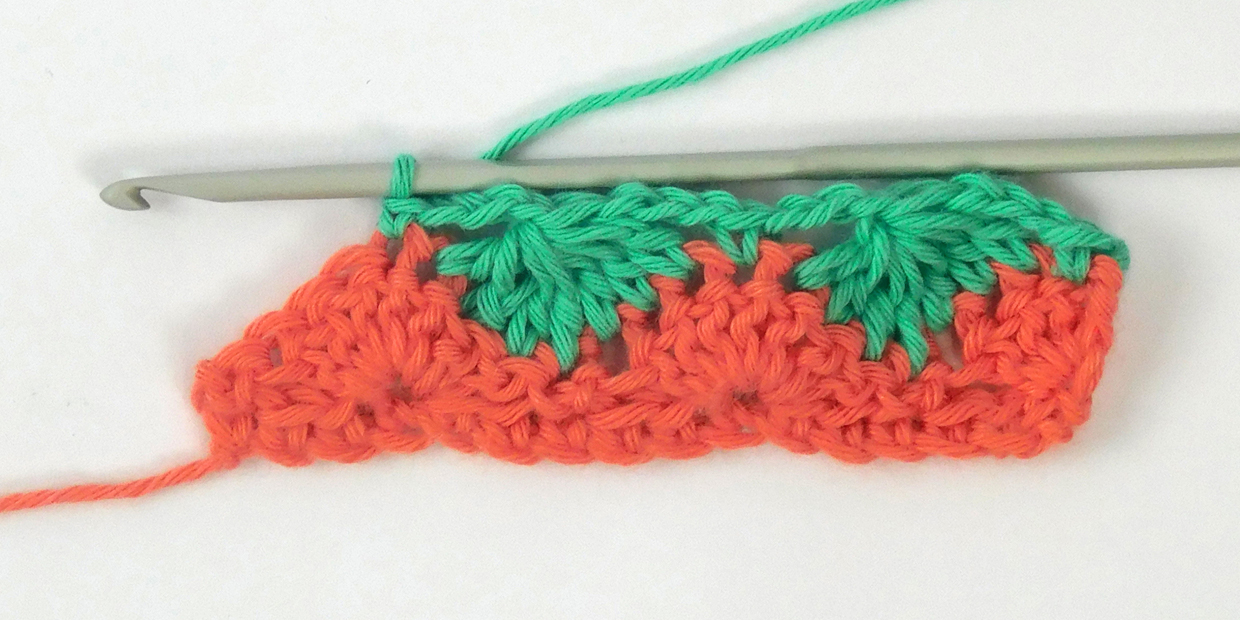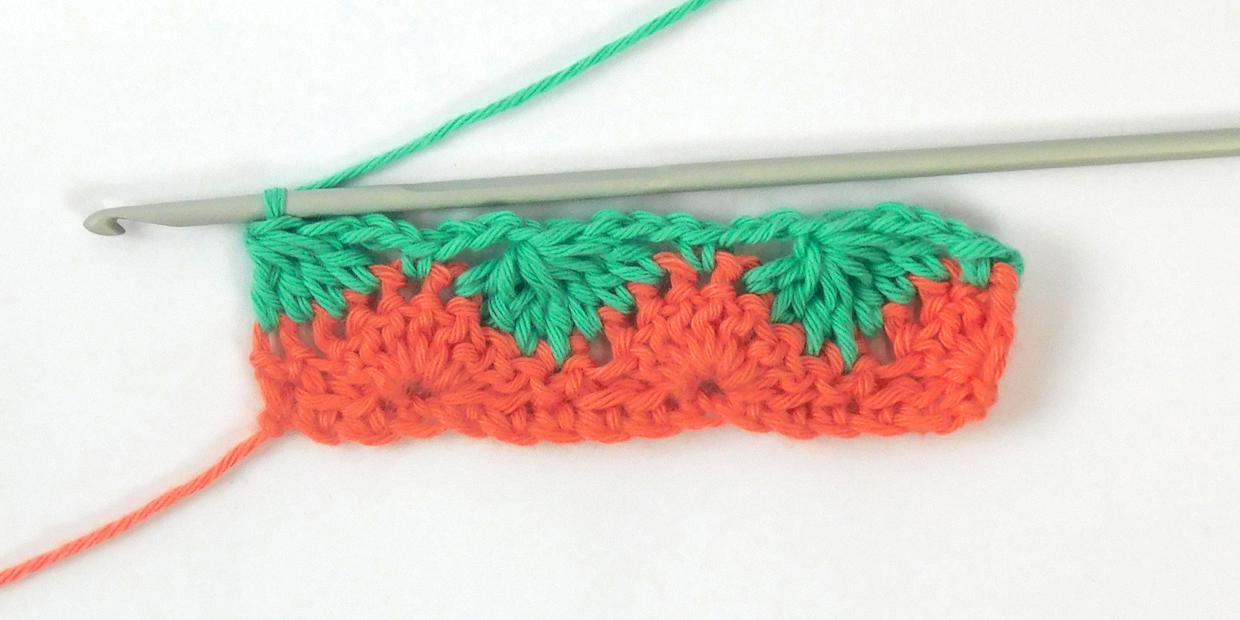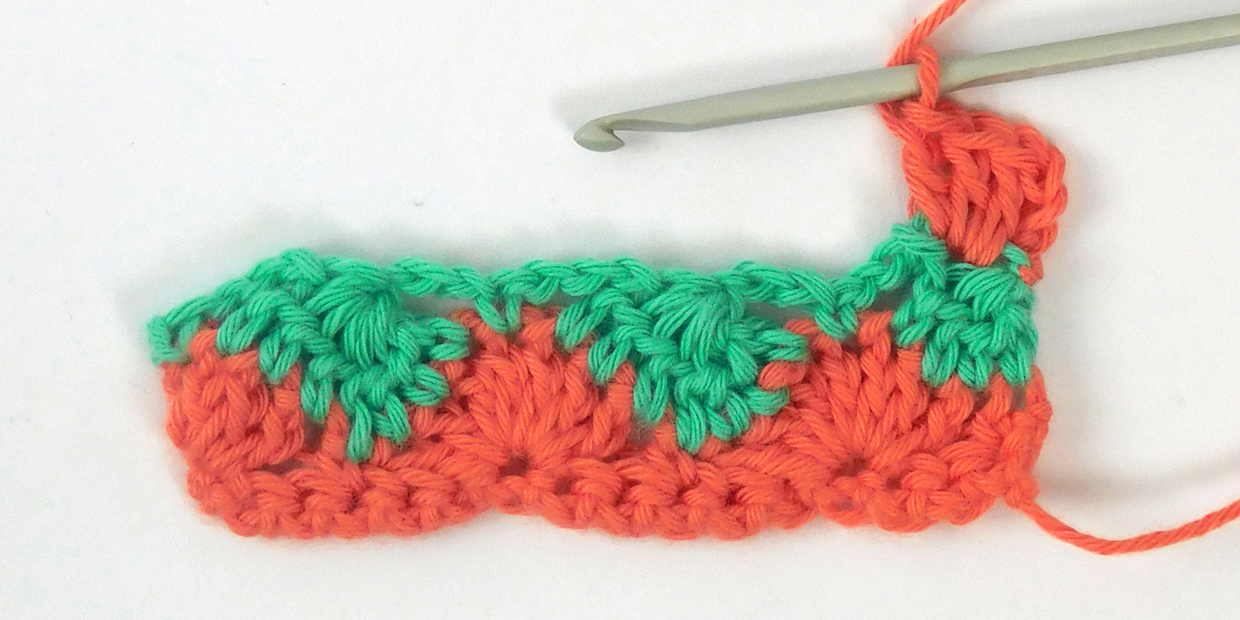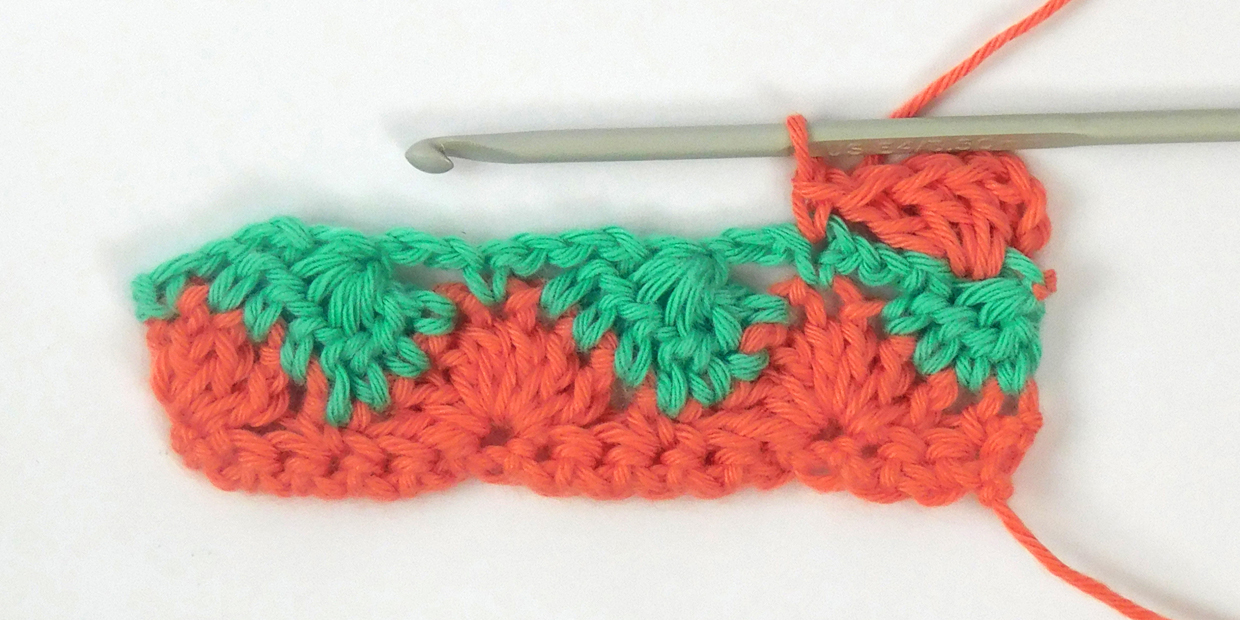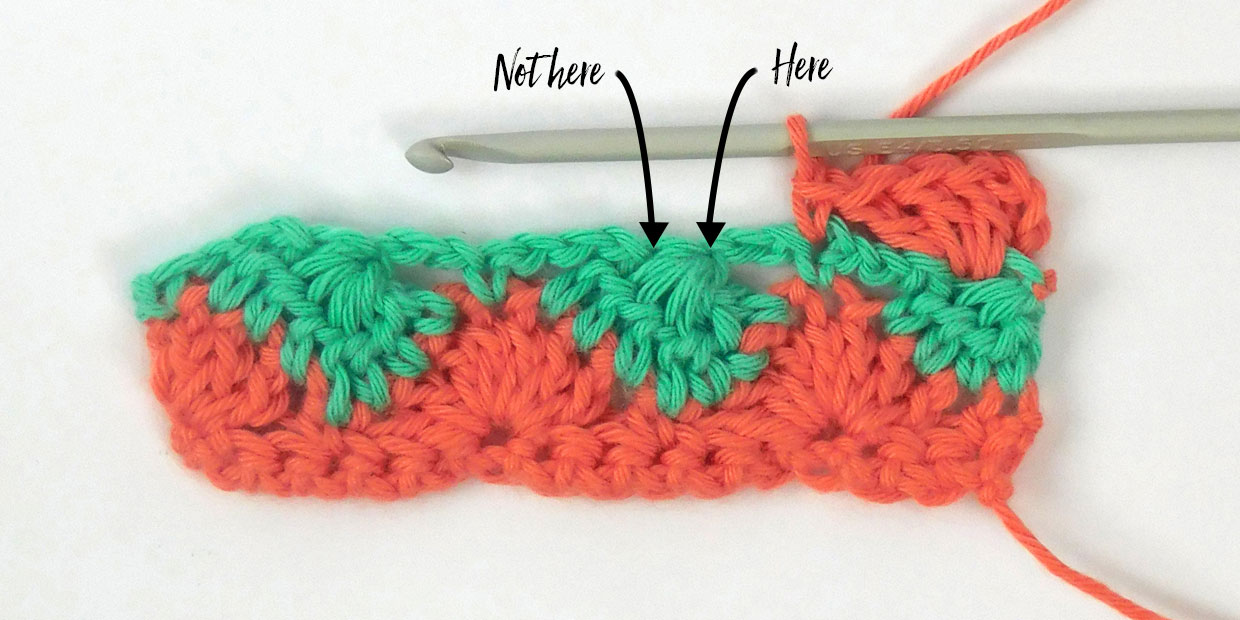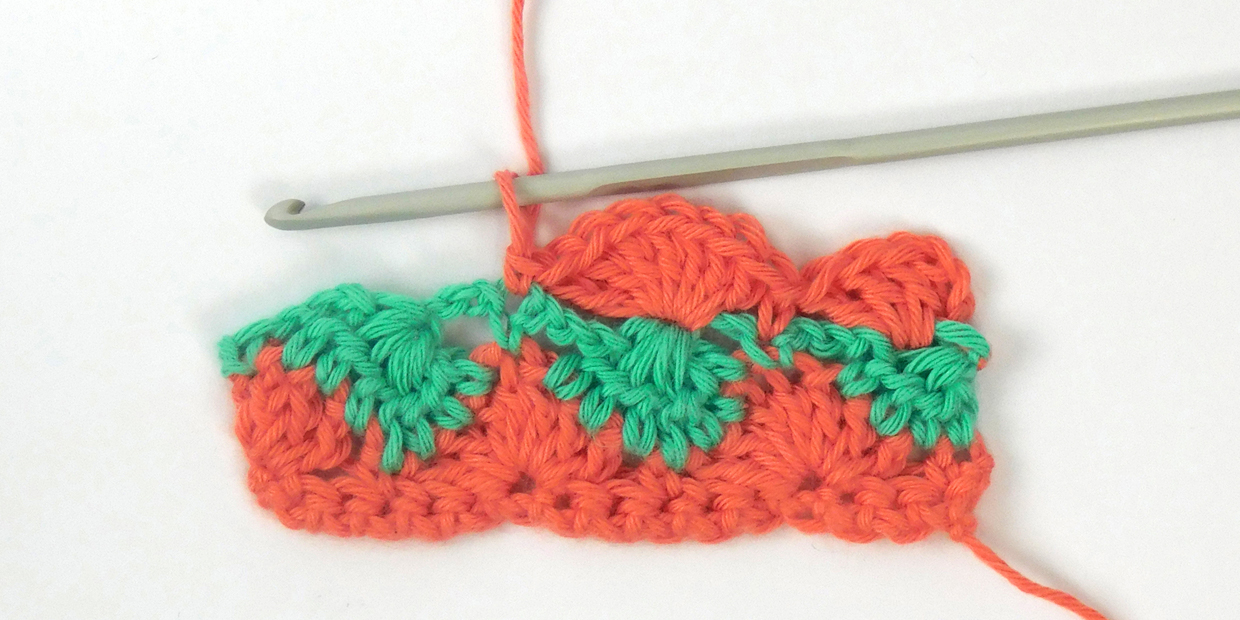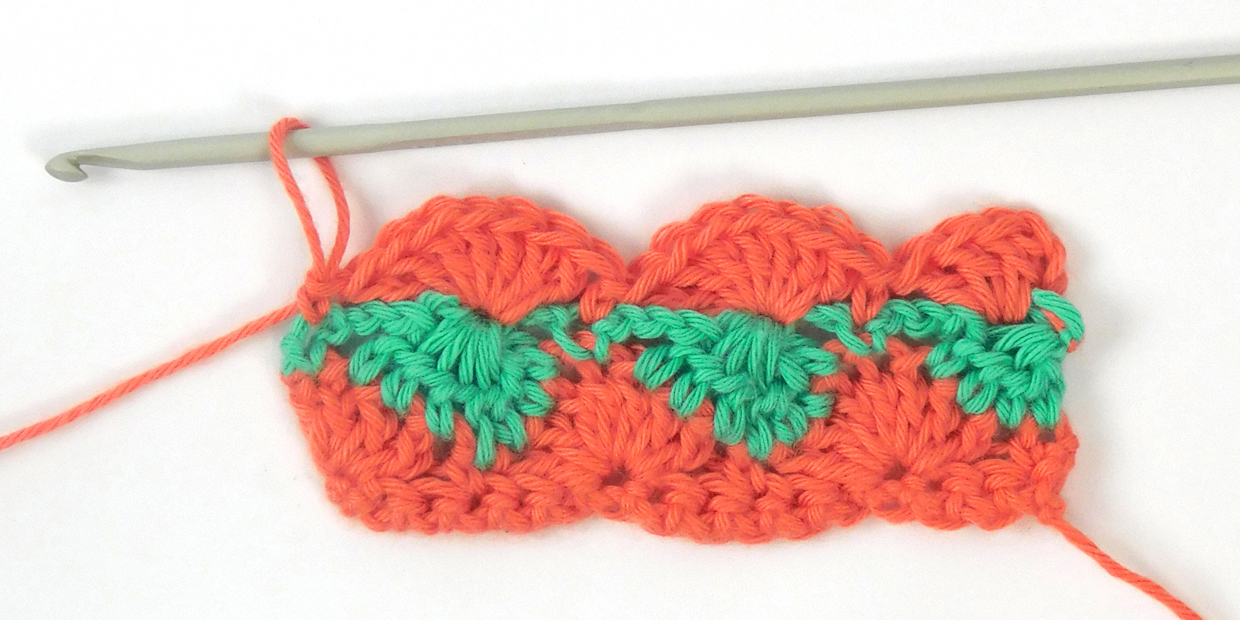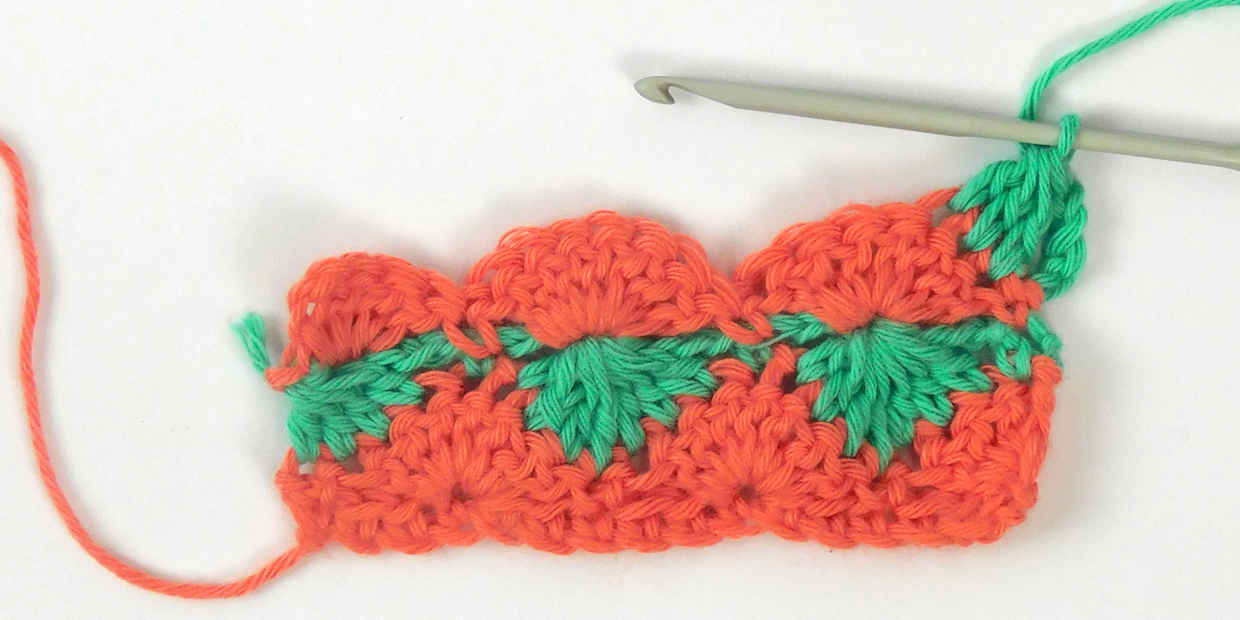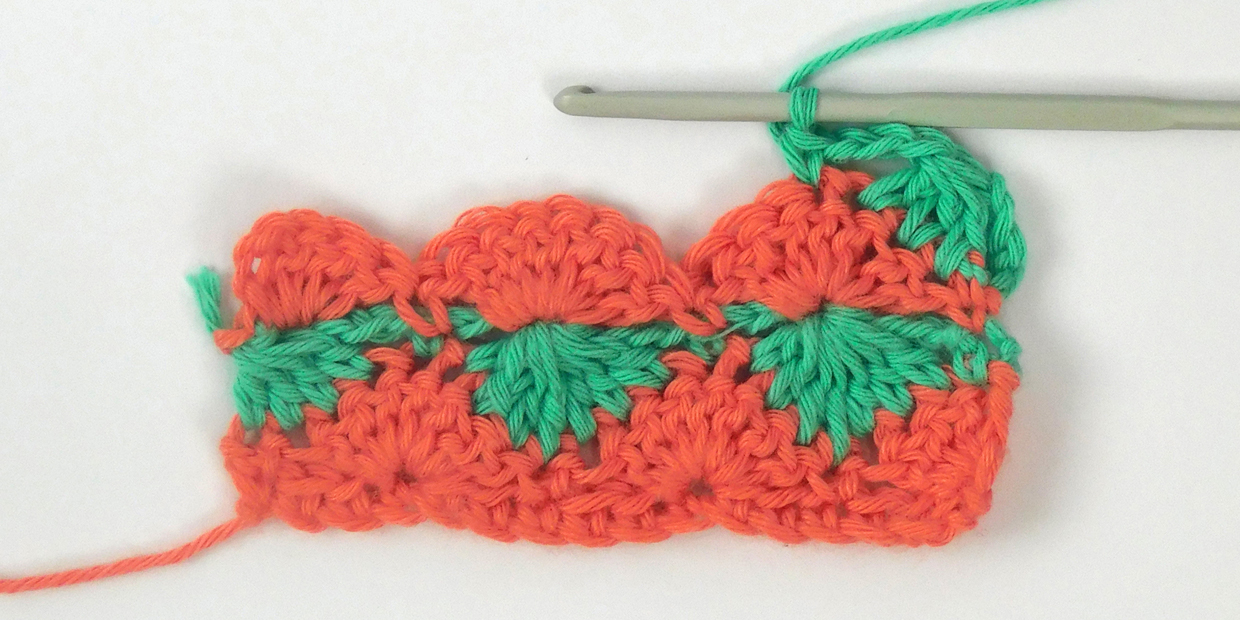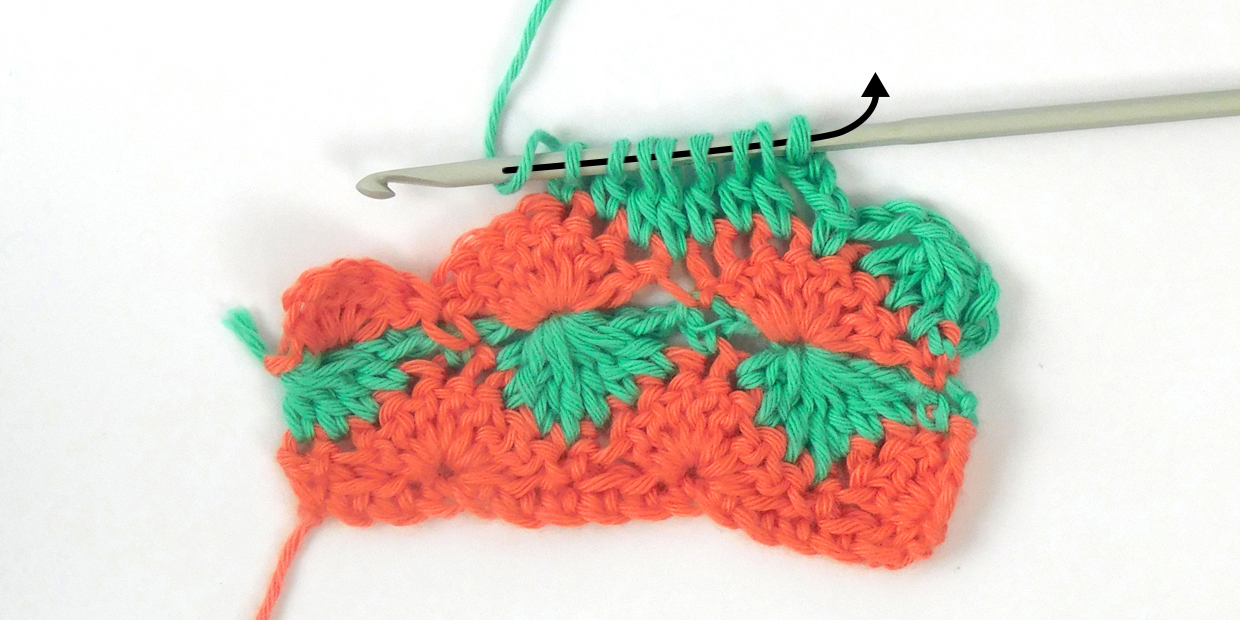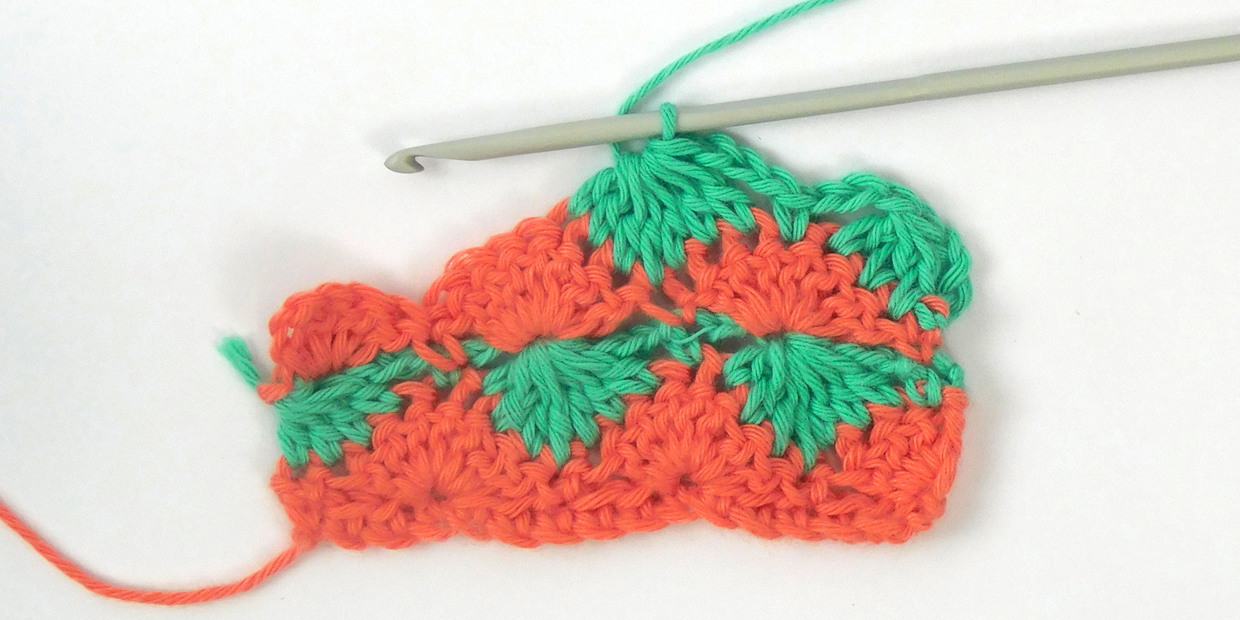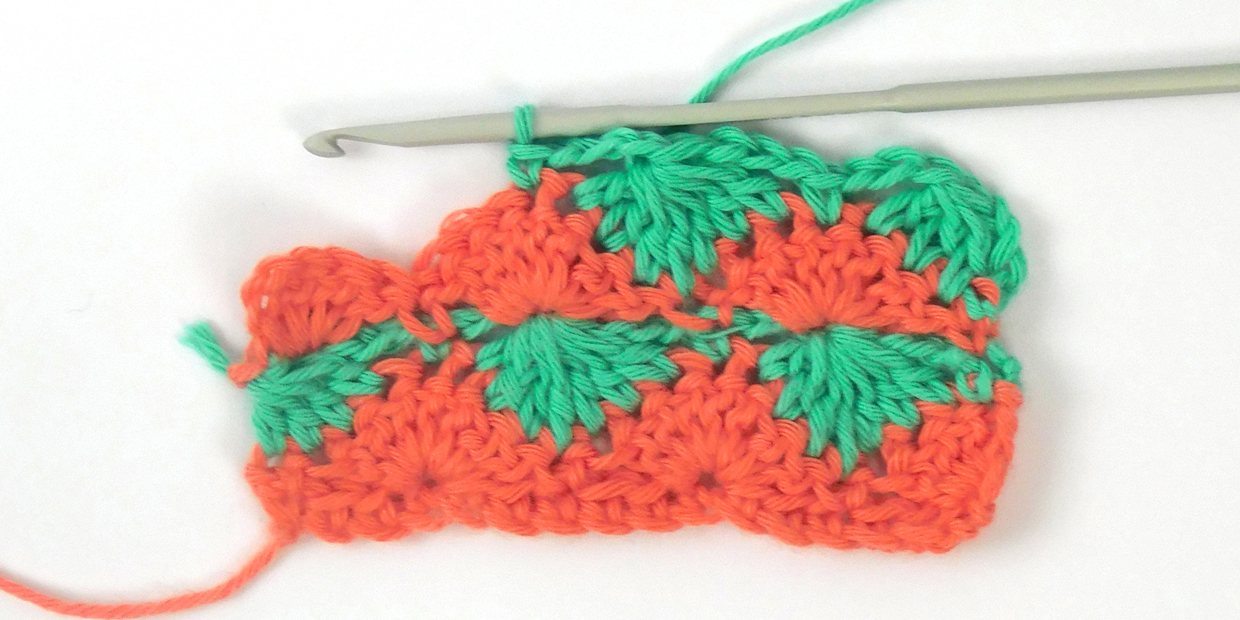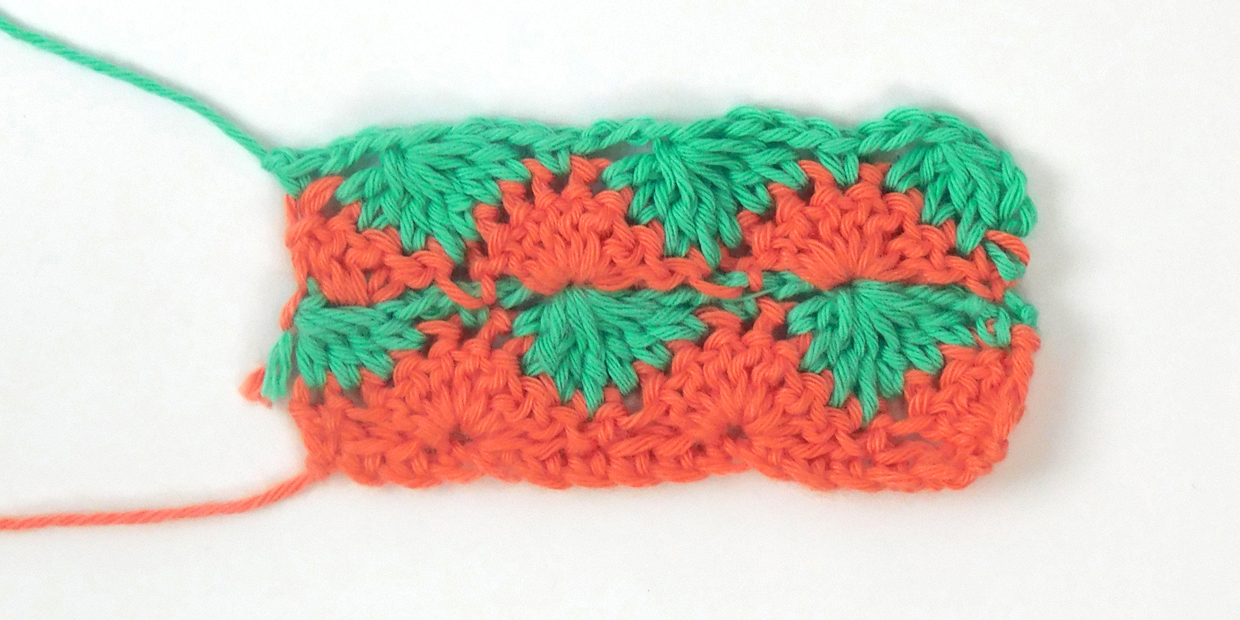And that’s how you do the standard Catherine wheel stitch.
Alternative Catherine wheel stitch method
We love the Catherine wheel stitch, but there is another way to create this fab stitch. It’s practically the same method, except that with this method your sides will be symmetrical. Because this method also uses more dc stitches, it helps to create a more solid fabric without so many gaps created by the chain spaces.
Step 1
Unlike the normal method, for this alternative method our foundation chain needs to be a multiple of 8, and then add an extra chain (plus however many chains you need for your turning chains). So for this tutorial again we’re going to start with a dc row, so ch18 (8+8+1+[1 turning ch]), dc in second ch from hook and in each ch along. Turn your work.
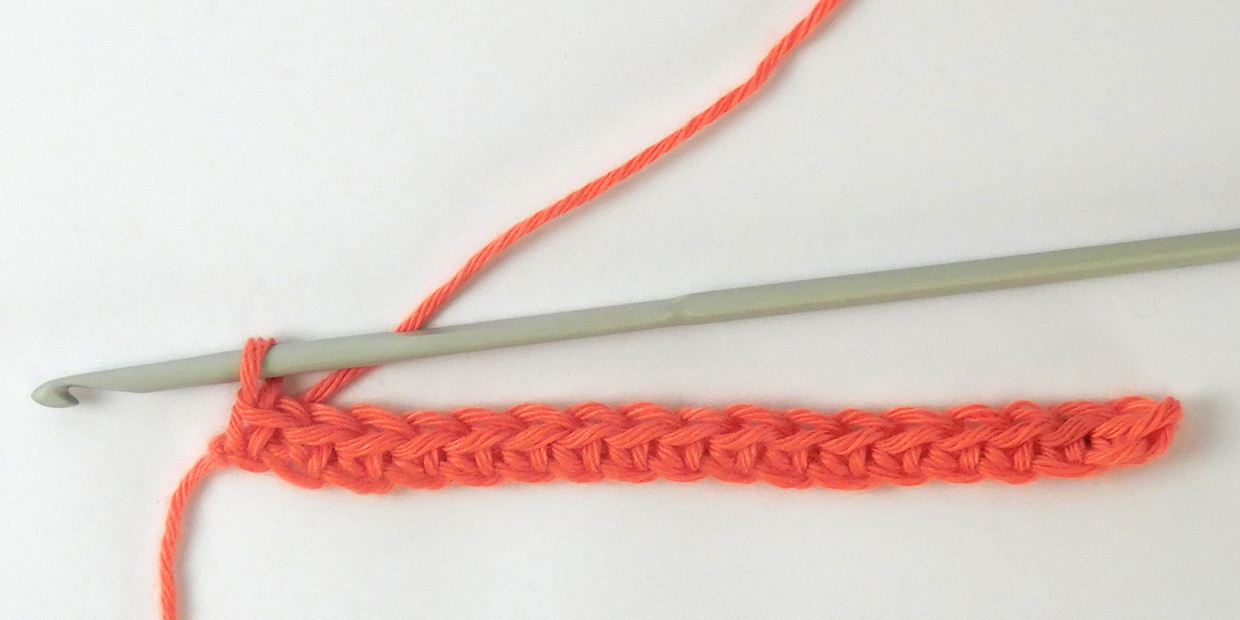
Step 2
Start Row 1 with ch1 and dc in the first 2 stitches.
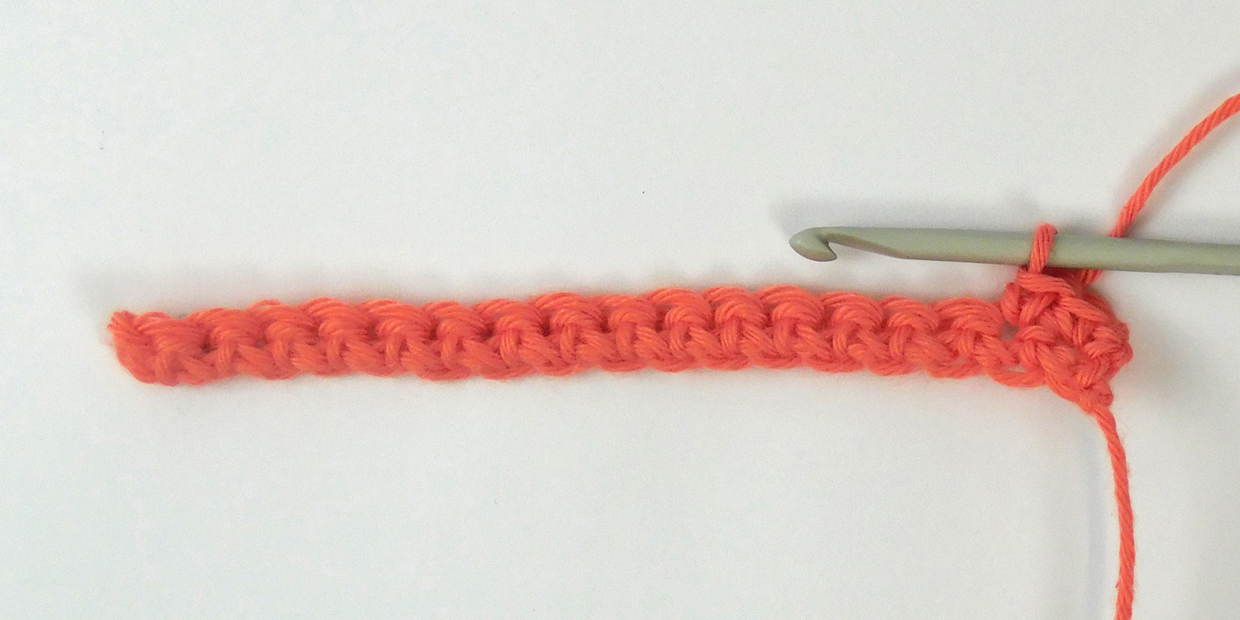
Step 3
Like before, we’re now going to skip 2 stitches, 7tr in next st, skip 2 sts and dc in the next stitch.
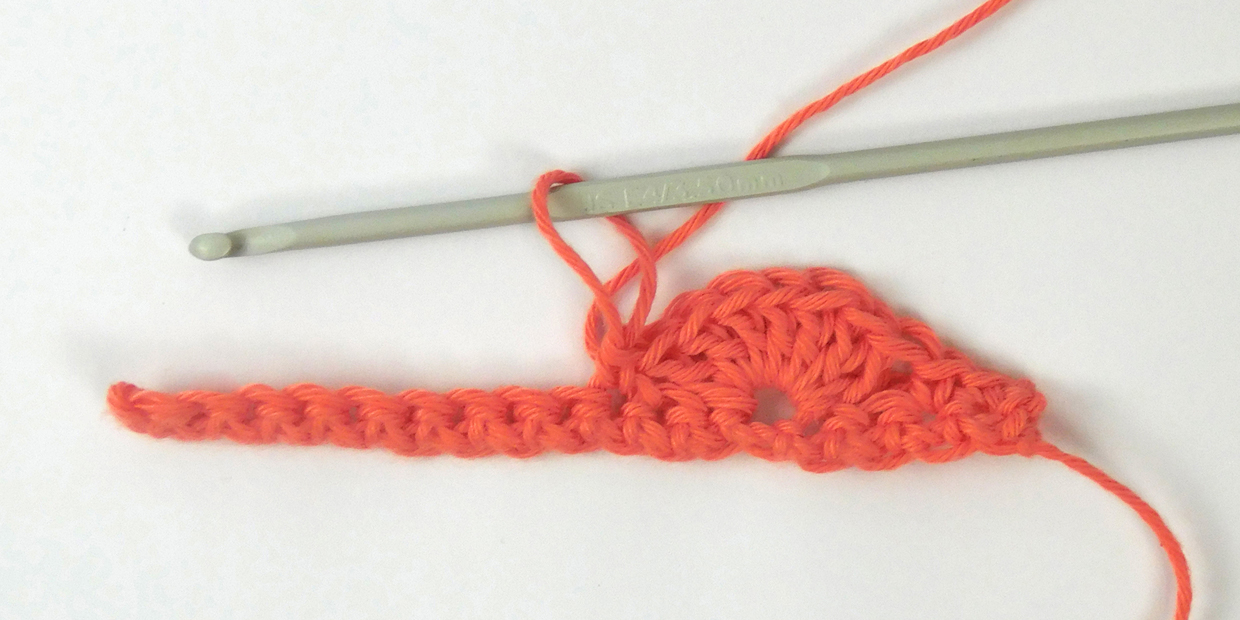
Step 4
Now we’re going to dc in the next 2 stitches. You’ll notice the difference now, this method has three dc stitches in between each semi-circle rather than just the one.
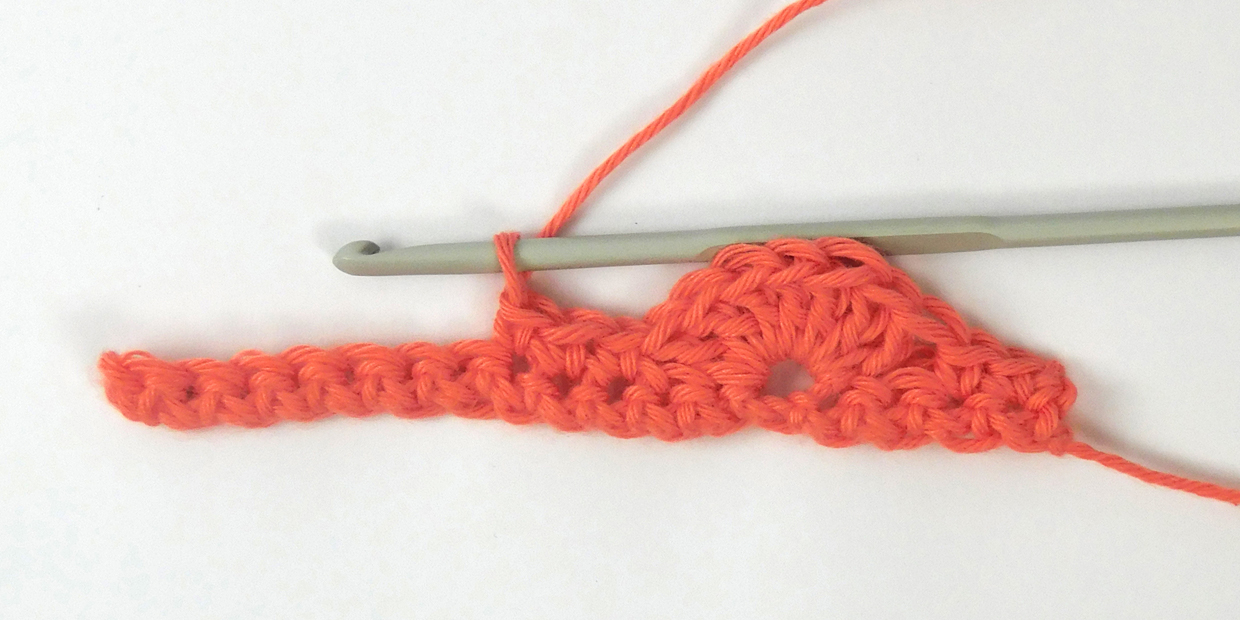
Step 5
Skip 2 sts, 7tr in next st, skip 2 sts, dc in the last 2 stitches. This completes Row 1. Turn your work.
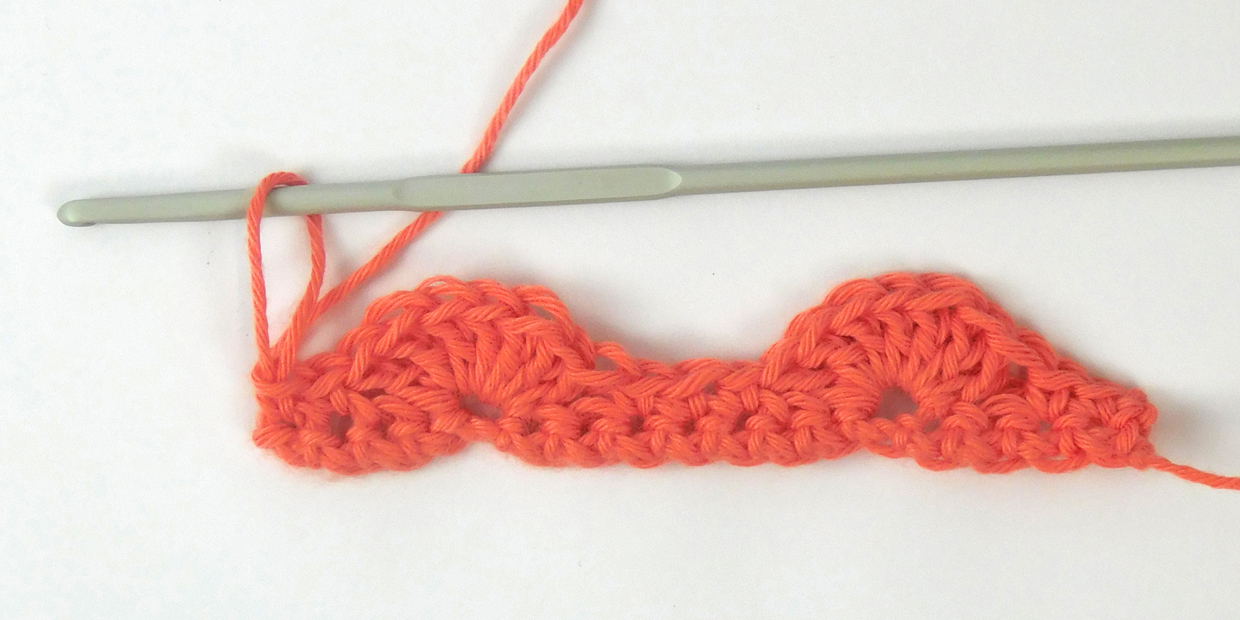
Step 6
Start Row 2 with ch2, then tr3tog in the next 3 stitches. You may be wondering why you start with a ch2 rather than a ch3 – this is because the ch2 and the tr3tog will act as a tr4tog and when you come to work the next row you will only be working into the tr3tog. By just working ch2 instead of ch3 your side edge will be a bit neater and not create a loop that sticks out at the side.
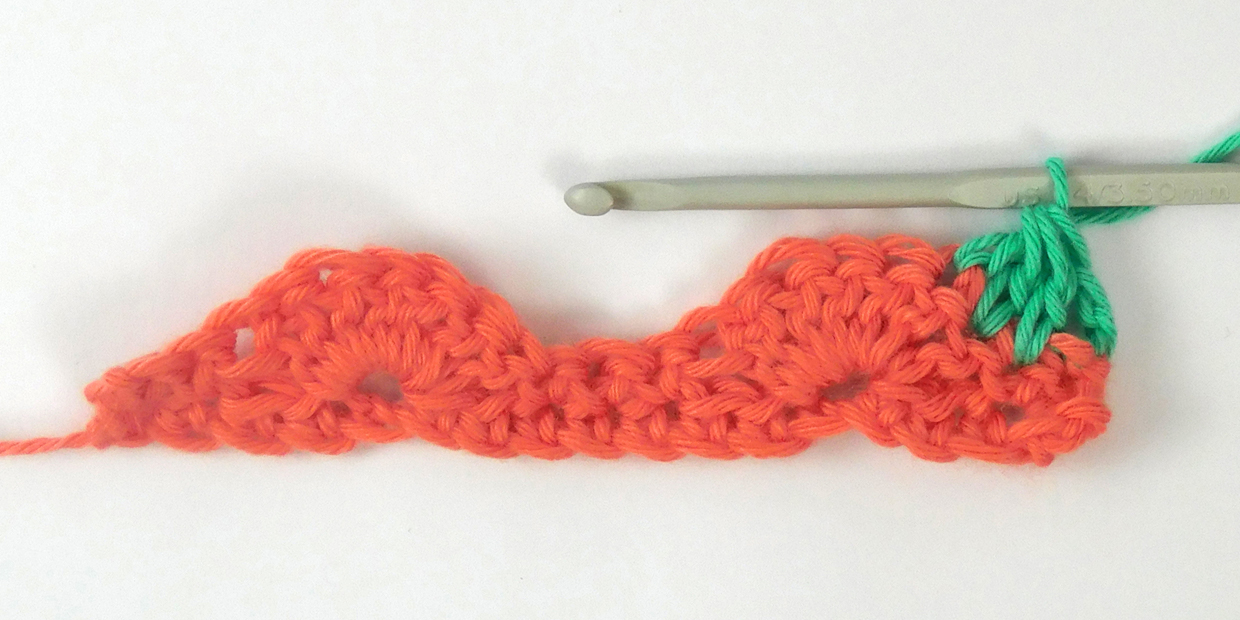
Step 7
Ch3, but don’t skip any stitches.
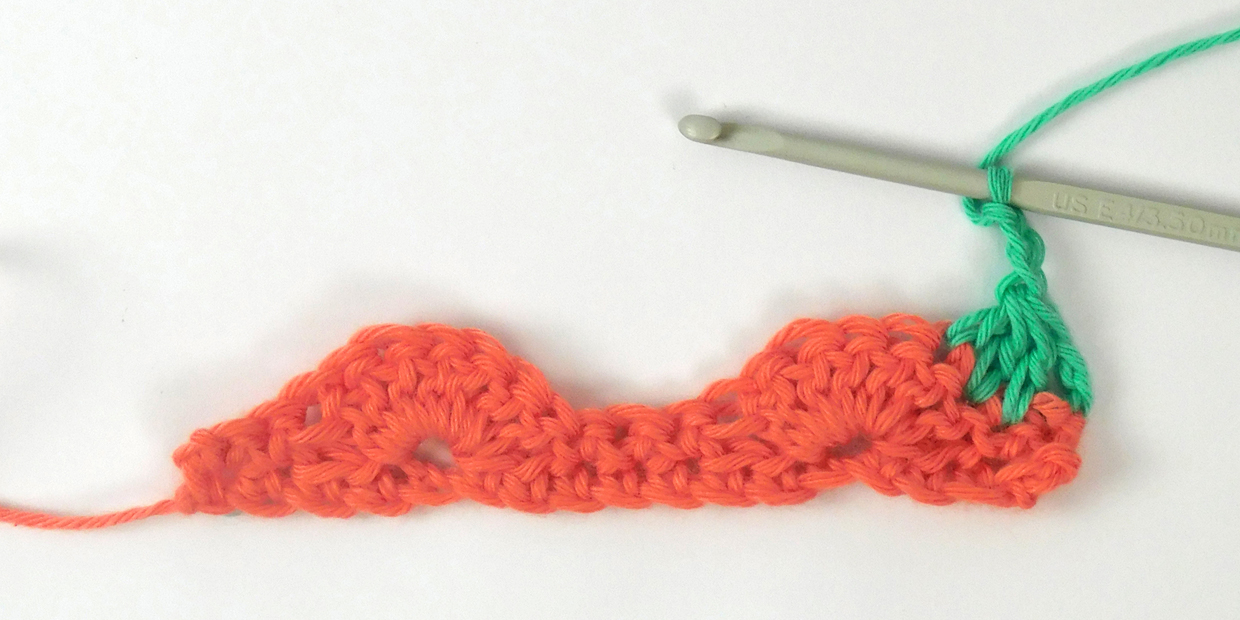
Step 8
Dc in the next 3 stitches
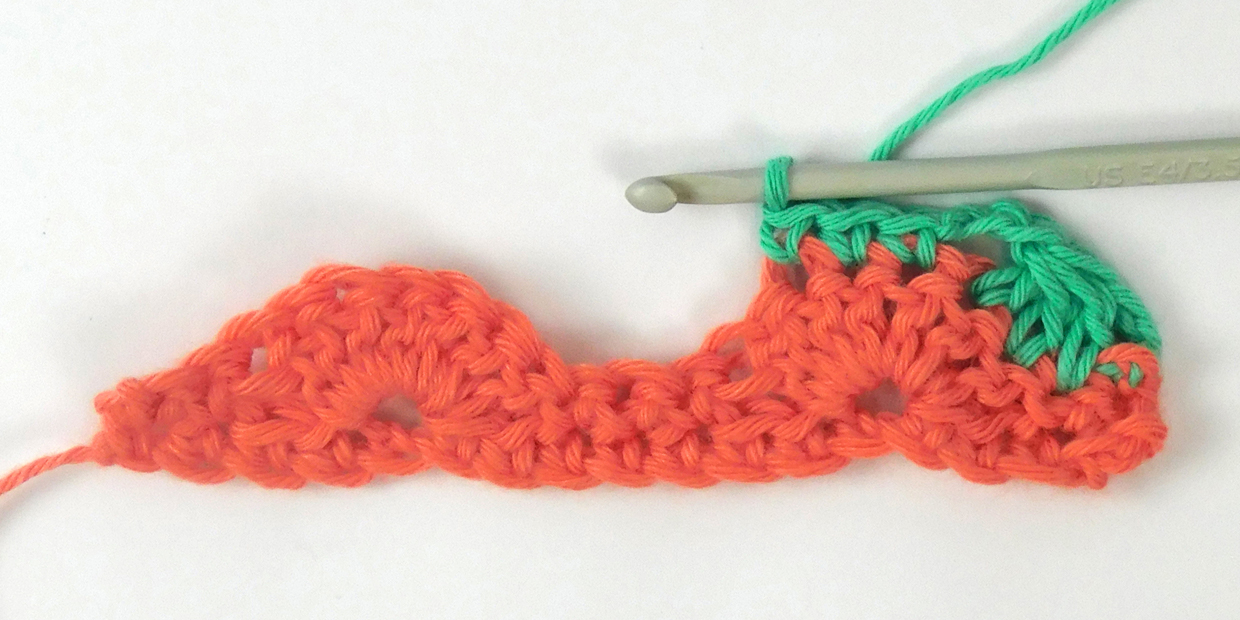
Step 9
Ch3, then tr7tog in the next 7 stitches (this will be into 2tr, 3dc, 2tr)
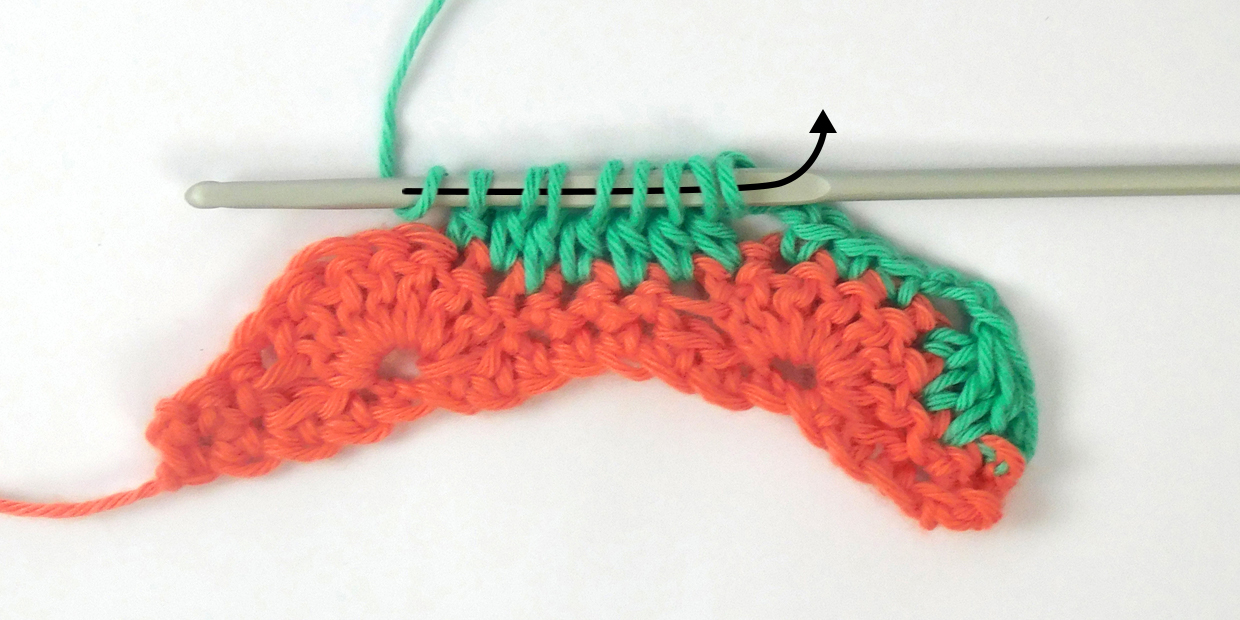
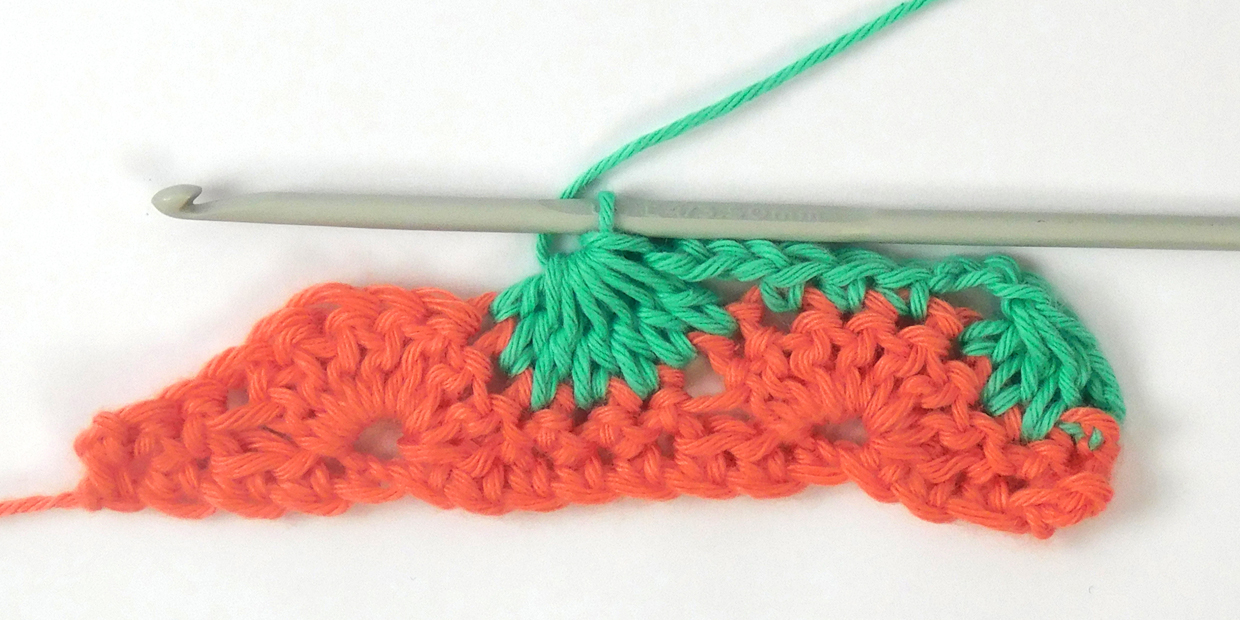
Step 10
Ch3 and dc in next 3 stitches, ch3.
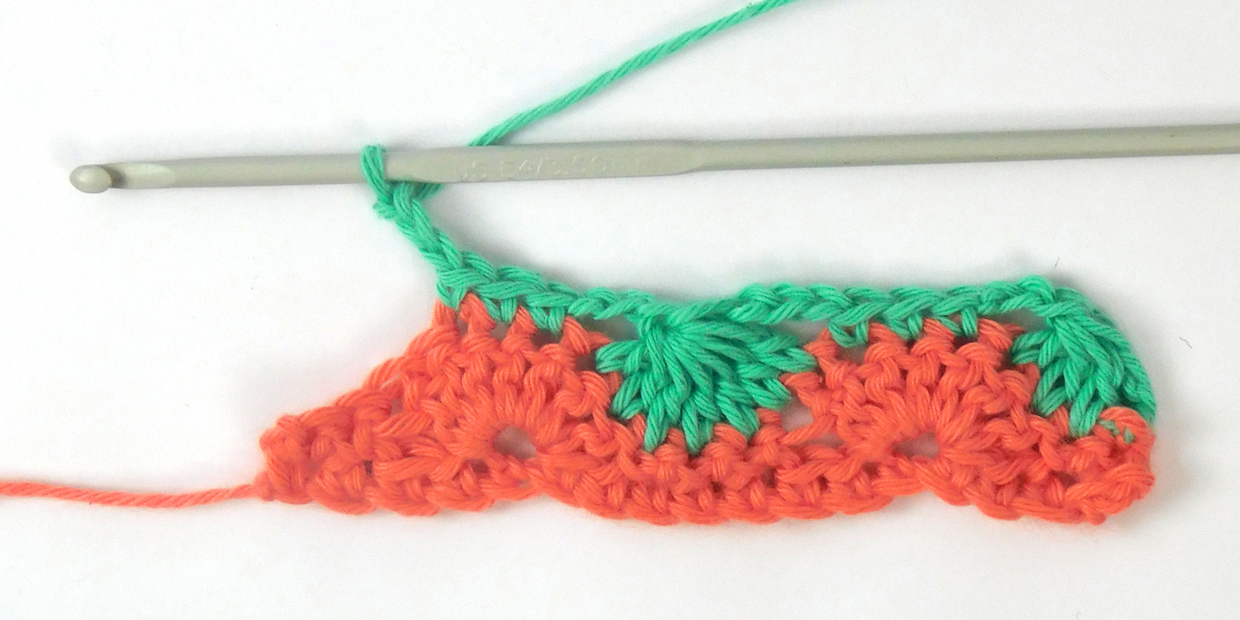
Step 11
To complete Row 2, tr4tog into the next 4 sts. Turn your work.
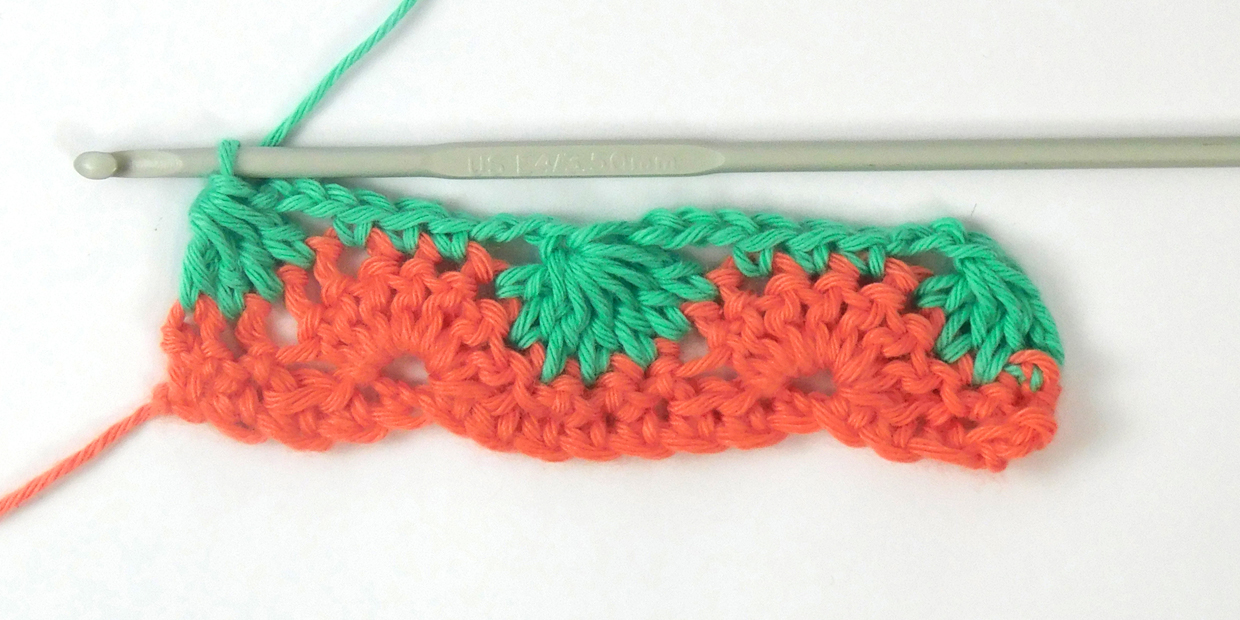
Step 12
Start Row 3 with ch3 (counts as a treble), and 3tr into the first stitch (at the base of your ch3)
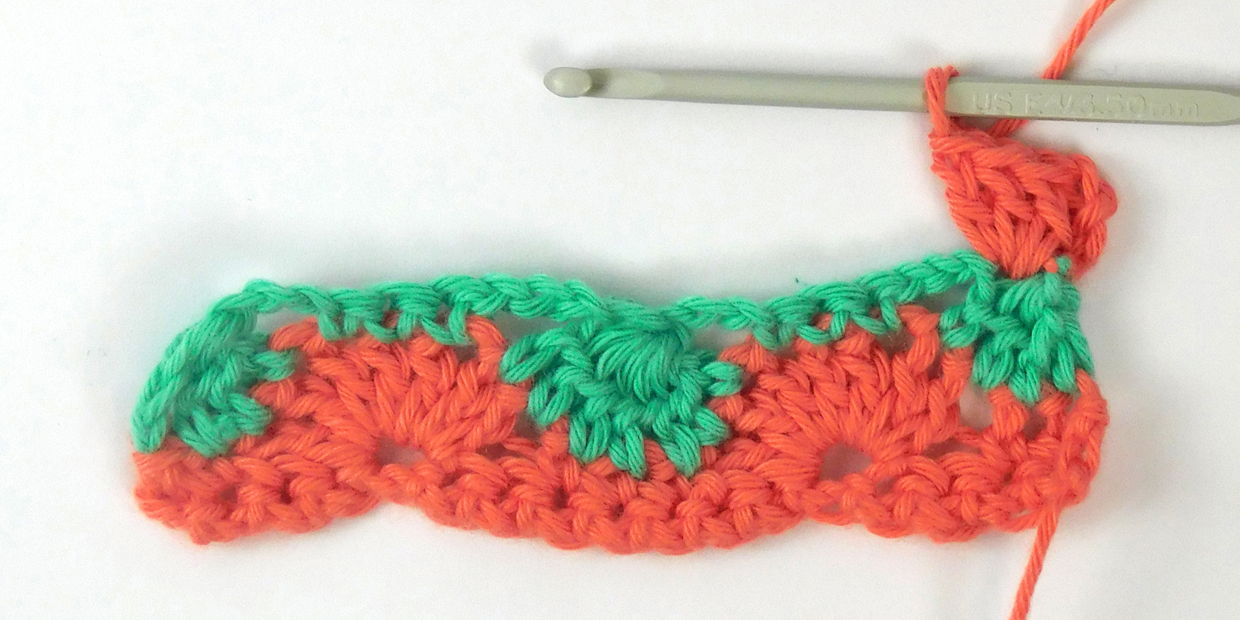
Step 13
Skip the ch3 and dc into next 3 sts.
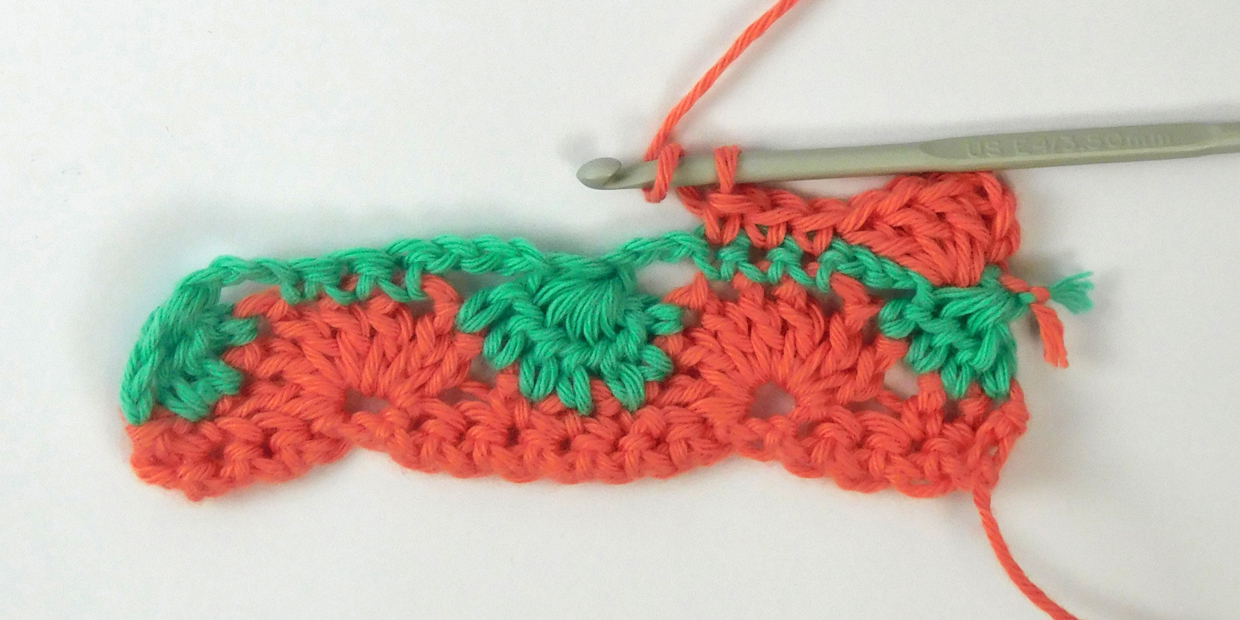
Step 14
Skip ch3 and 7tr into next st (remember our guide from the main method for where to insert your hook – in the same place as the tr7tog come together)
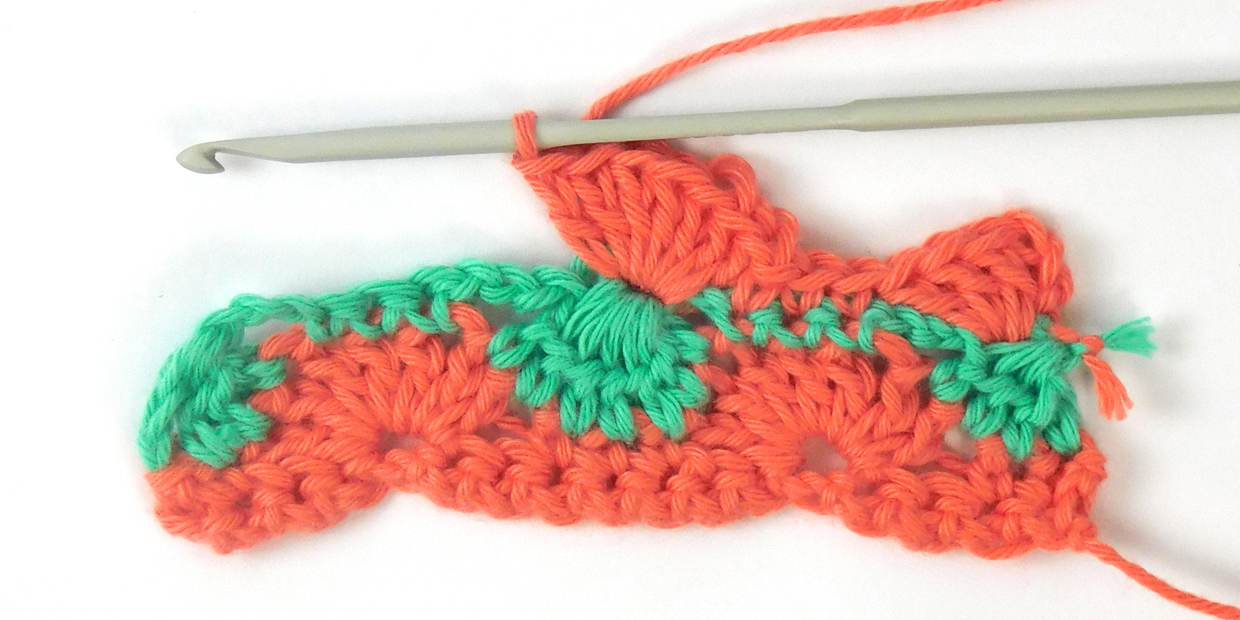
Step 15
Skip the next 3ch, dc in next 3 sts, skip 3ch, 4tr in final stitch. This completes Row 3. Turn your work.
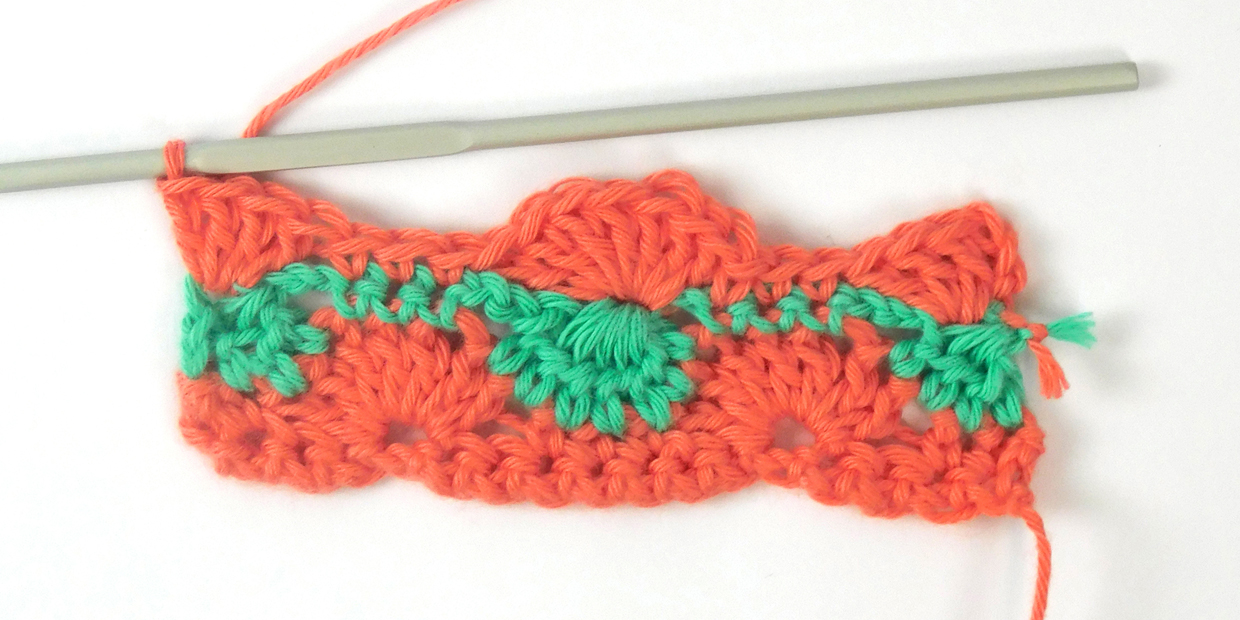
Step 16
To start Row 4, ch1, dc in first 2 sts, ch3.
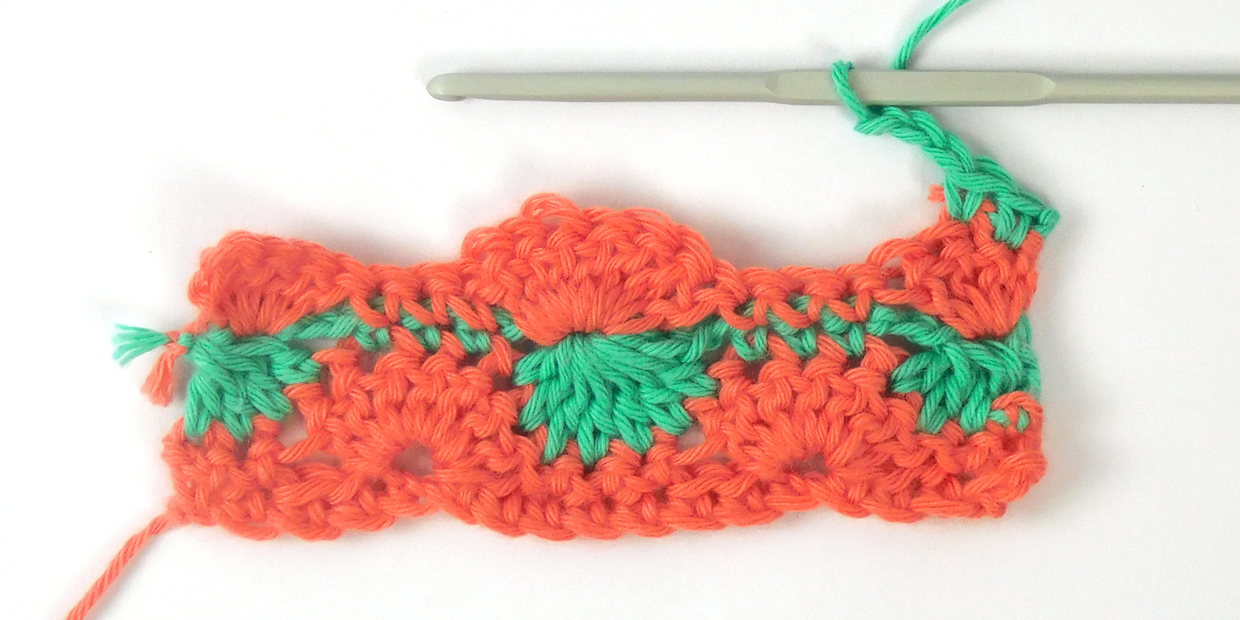
Step 17
Tr7tog in next 7 stitches (again this will be going into 2tr, 3dc, 2tr)
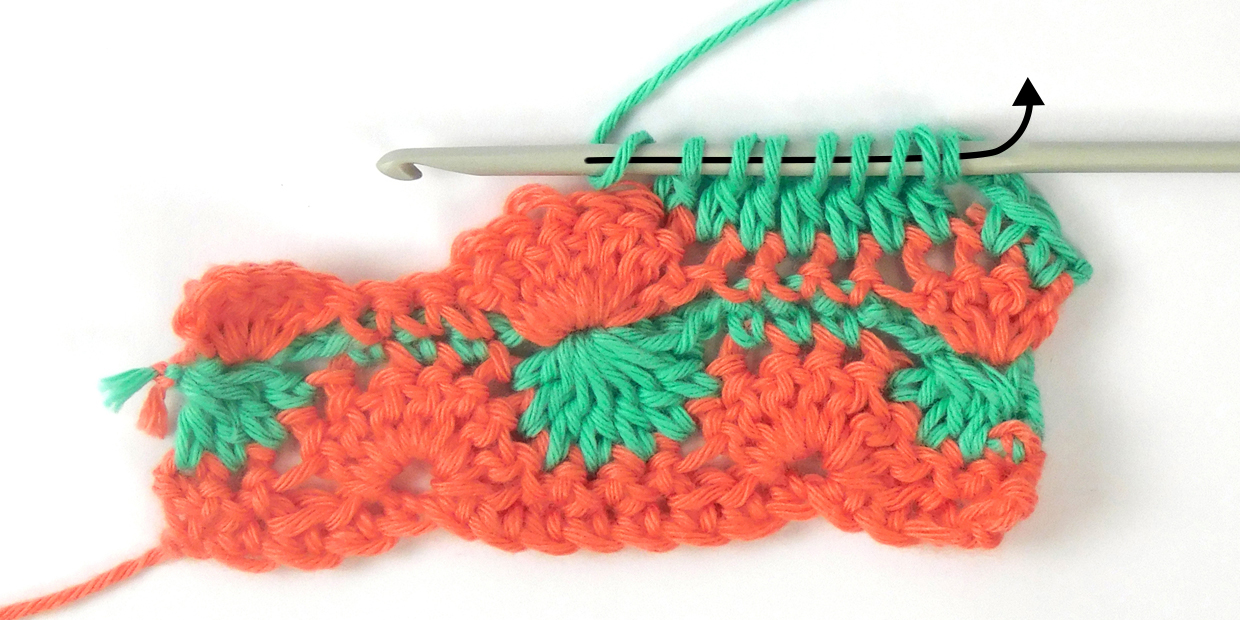
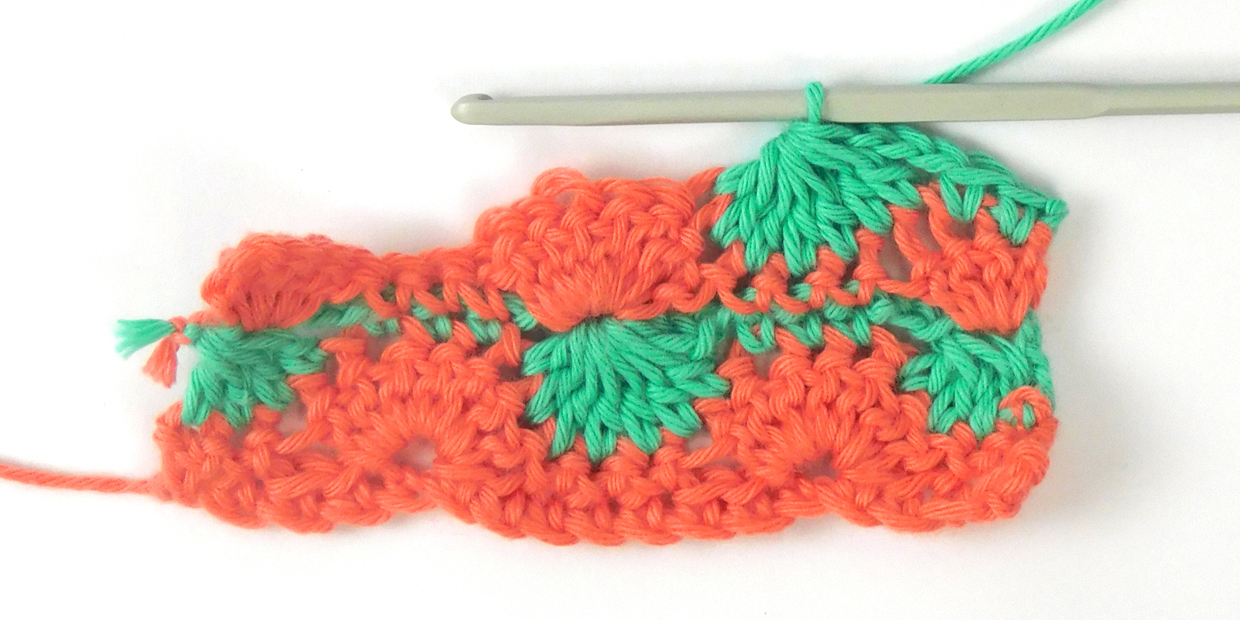
Step 18
Ch3 and dc into next 3 sts.
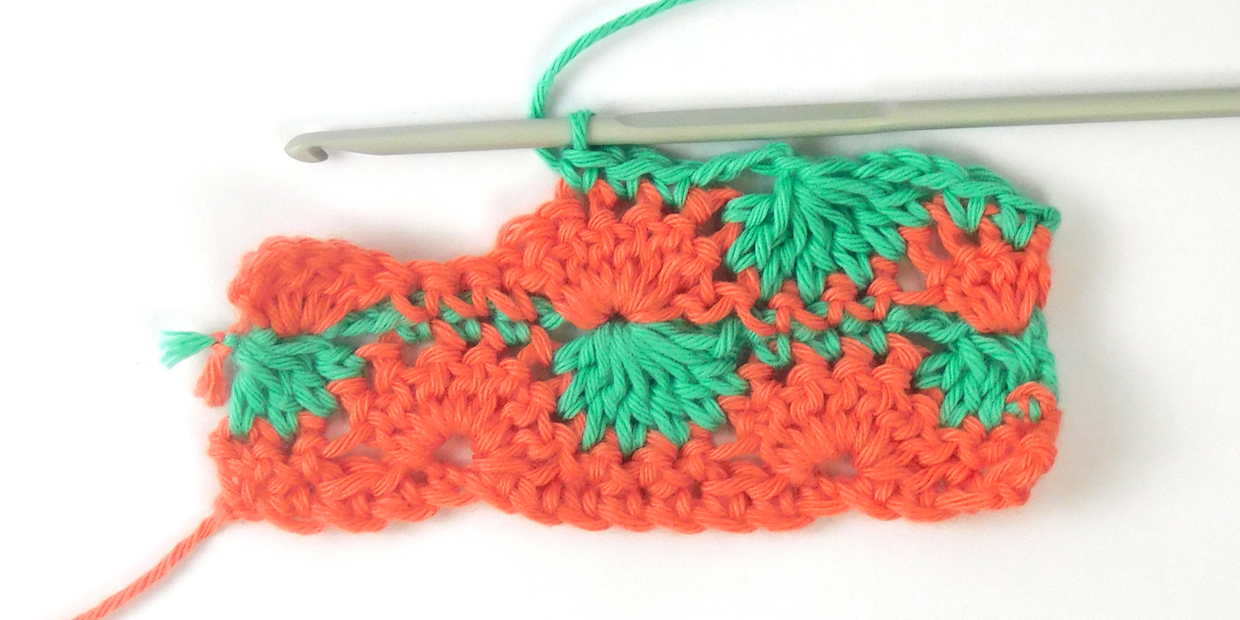
Step 19
Complete row 4 with ch3, tr7tog over next 7 stitches, ch3, dc in next stitch, dc in top of 3ch.
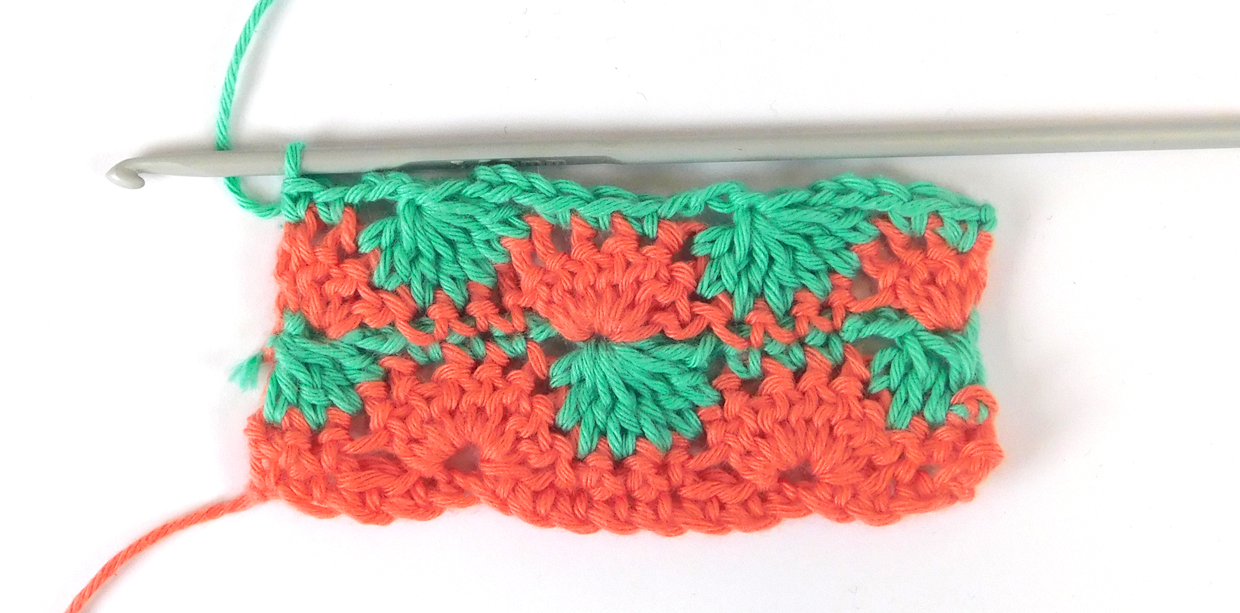
To continue with the stitch pattern, just keep repeating rows 1-4.
